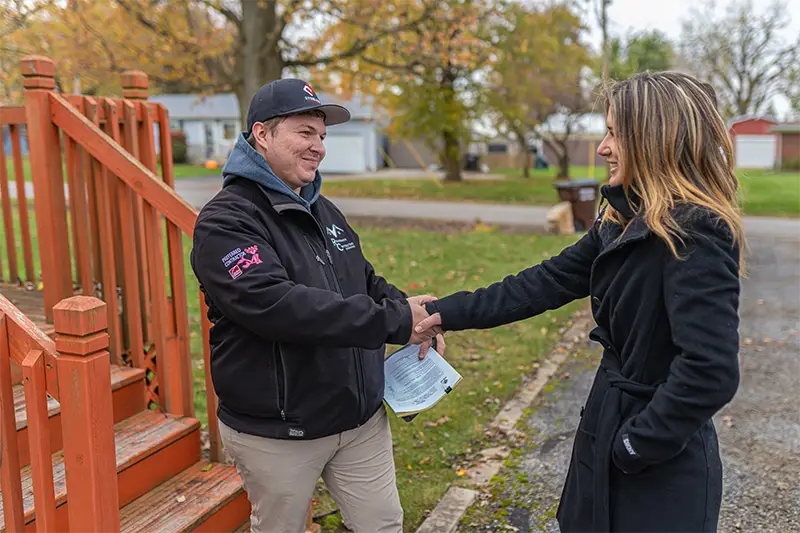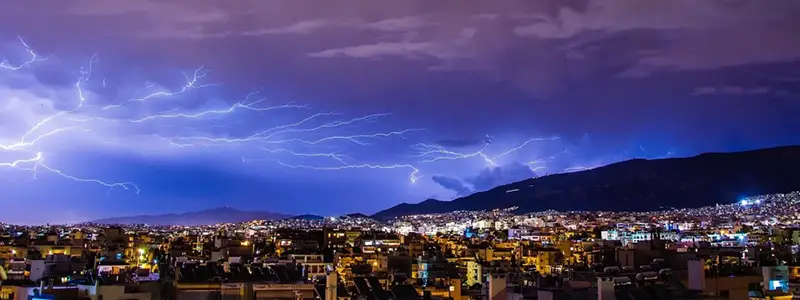Spring Storms in Michigan: Protect Your Roof with a Timely Inspection
Spring storms in Michigan can strike suddenly, bringing with them high winds, hail, and heavy rainfall. These intense weather conditions can seriously impact your roof’s integrity, often without showing immediate signs of damage. Scheduling a post-storm roof inspection is crucial to identifying hidden problems and preventing costly repairs later on.

Why Post-Storm Roof Inspections Are Essential
While spring is known for its warmer weather and beautiful blooms, it also brings unpredictable storms. These severe weather events can cause:
- Loose or Missing Shingles: High winds can blow shingles off, leaving your roof vulnerable to leaks.
- Hail Damage: Hailstones can puncture shingles, causing cracks that let moisture seep in.
- Leaks from Persistent Rain: Heavy downpours can expose vulnerabilities in your roof, leading to leaks.
- Moisture Damage: Ignoring minor damage can lead to long-term issues like rotting wood and mold growth.
Even the smallest amount of damage, if left untreated, can cause severe consequences such as interior water damage, insulation failure, and expensive structural repairs. A timely roof inspection allows you to catch these problems before they worsen.
The Benefits of Professional Roof Inspections
While some homeowners may consider inspecting their roof themselves, there are several key reasons why it’s best to rely on professional roofing contractors for this critical task:
Ensuring Safety
Roof inspections can be hazardous without the right training and equipment. Professional roofers are equipped with safety gear and know how to perform inspections safely, reducing the risk of injury.
Expert Detection of Damage
A trained roofing contractor can spot subtle signs of damage that an untrained eye might miss. This includes hail dents, shingle granule loss, and flashing separation—small issues that, if addressed promptly, can prevent expensive repairs.
Comprehensive Damage Reports
A professional inspection includes a detailed report, often with photos, outlining the condition of your roof. This document is helpful when filing insurance claims for storm-related damage, ensuring you receive fair compensation.
Save Money with Early Detection
Catching roof problems early is key to minimizing repair costs. Professionals can recommend focused repairs to prevent extensive damage, potentially saving you from the high cost of a full roof replacement.
Peace of Mind
Knowing that your roof is in good condition and ready for the next storm can provide peace of mind—especially given Michigan’s unpredictable spring weather.
What to Expect During a Roof Inspection
A thorough roof inspection from a qualified contractor typically involves:
- Exterior Evaluation: Checking for loose, cracked, or missing shingles, exposed underlayment, soft spots, flashing damage, and gutter issues.
- Interior Assessment: Inspecting the interior for signs of leaks, ceiling stains, water damage, or mold.
- Attic Review: Assessing insulation, moisture levels, and ventilation to ensure your roofing system is working effectively.
- Comprehensive Report: After the inspection, you’ll receive a detailed report with suggested repairs, estimated costs, and documentation for insurance claims.
When Should You Schedule a Roof Inspection?
If your area has recently been hit by a spring storm—especially one with hail or high winds—it’s important to schedule a roof inspection within a few days. Even if you don’t notice visible damage, there could be underlying issues developing that require professional attention.
Protect Your Home with a Roof Inspection Today
At Sterling Construction & Roofing, we offer prompt, professional roof inspections for storm damage throughout Livonia, West Bloomfield, and the greater Detroit Metro area. Our certified experts provide honest assessments, fair estimates, and top-quality service for both residential and commercial roofs.
Don’t wait for small problems to escalate into major repairs. Schedule your post-storm roof inspection today to keep your home protected.




